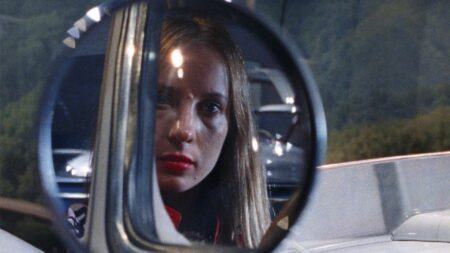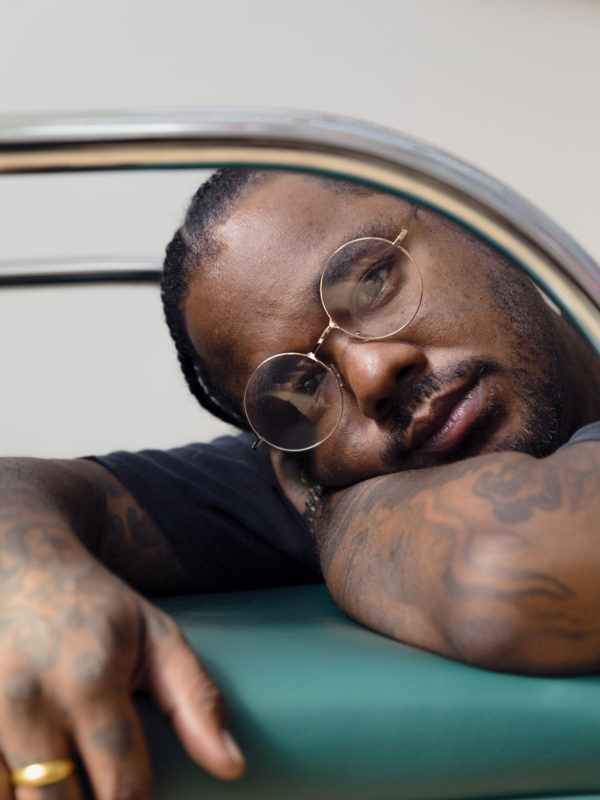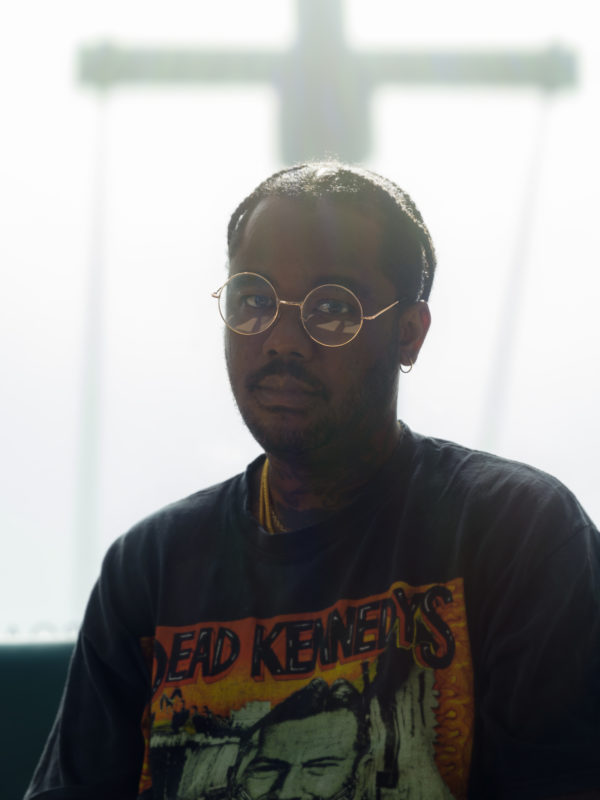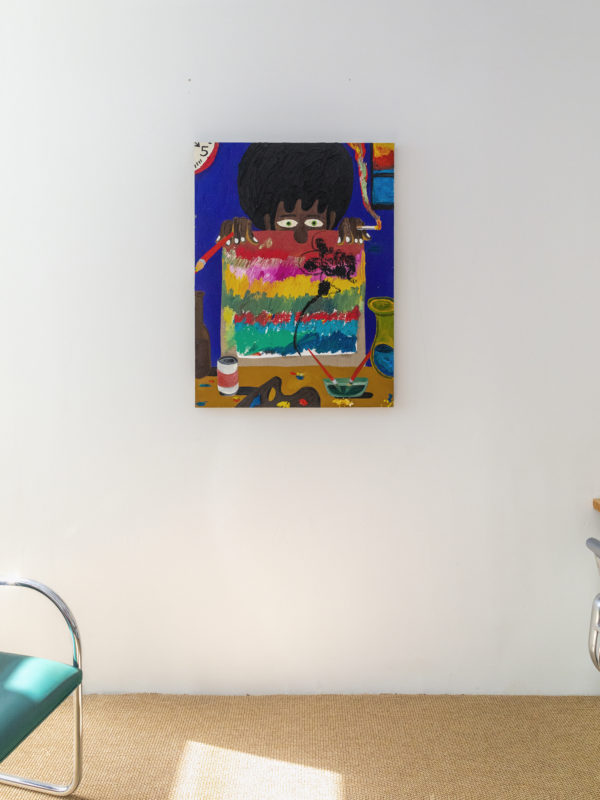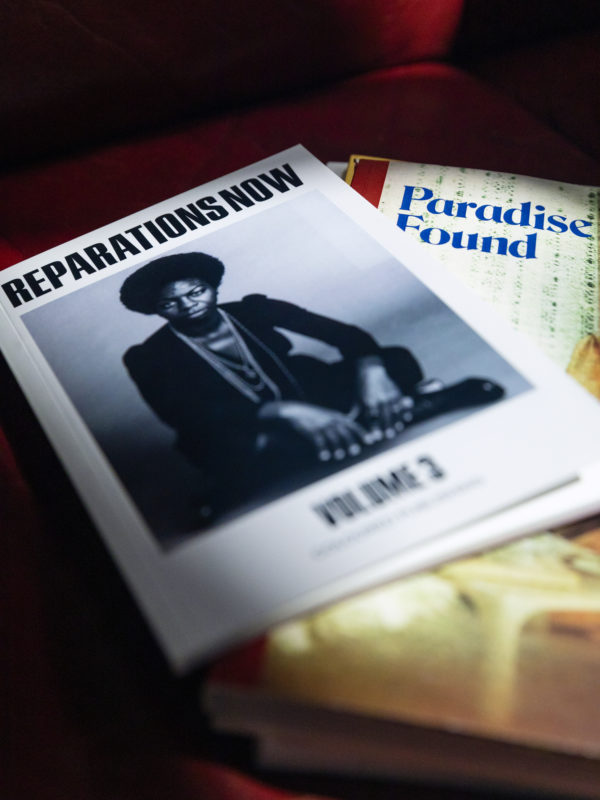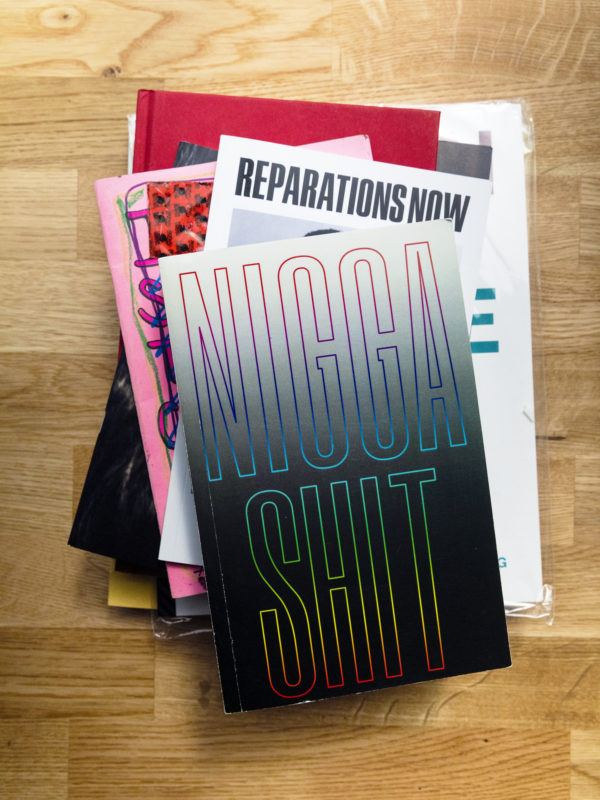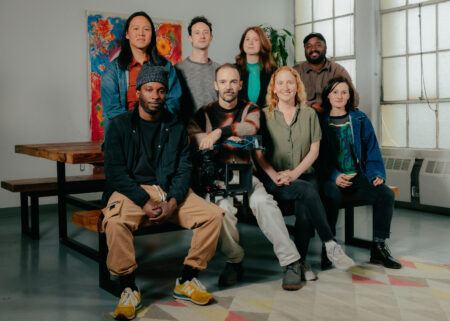Art21 – Could you talk a little bit about the impetus behind starting Coloured Publishing?
Devin Troy Strother – I went to school for fine art and illustration, but had an emphasis on printmaking during that time in undergrad. So, I have a background doing lithography, etchings, silk screen, and wood cuts. After I graduated from school and started showing my work in galleries, my partner Yuri Ogita, a graphic designer, and I wanted to put together some type of book that I could sell directly. The first book I made was a bunch of photos from my phone from 2009 until 2015, somewhere around there. I lived in New York from 2010 to 2015. So, it’s a compilation of me living in L.A. and me living in New York.
The name Coloured Publishing came about because my partner is Korean, I’m Black and part Native American. We wanted to do something that represented people of color, but also had something that took the edge off of it. From then until now, we’ve probably worked on about 20 different publications, if not more.
I wanted to do books that showed other aspects of art making besides the show, something a little bit more intimate that brought you into what my studio was like or what it’s like to make work. So, we started doing weird stuff with my friends and then started publishing more and more books by friends who were up and coming artists or not even really artists, my friends who make weird things. That’s the basis of Coloured Publishing as of right now.
I’m wondering how an artist book can be something different from what we typically understand it to be?
Tauba Auerbach is a great example. She makes very interesting books that don’t necessarily have to do with a show or a body of work. The way she presents it is through different avenues of how you think about a book, how you hold a book, how you turn pages in a book. The whole experience of the viewer and the viewer having to experience the book is something that I am interested in.
Books like that are something that you have to present to people in a place where they can see it because they’re not going to really get the whole scope of it if it’s something online that they could look at in a 3D spin model. That was our approach to trying to make books.
I can’t really afford a lot of the art that I would want to buy. I buy books surrounding the artists that I really love. There’s so much more information in books than you’re going to find online. Cory Arcangel is another interesting artist. He does a lot of weird books as well that are works of art in themselves. It takes you on a trip. Alex Da Corte as well. They both approach books in a similar fashion of the book being an experience and showing you things that aren’t necessarily online.
A lot of how I found out about art and the art world was through books. I owe it to myself to keep the tradition of art book making going. And to keep it going in a way that’s not the standard way art books are presented to a younger audience, or to an audience that’s new to the art world.
The direct address in the artist book feels important, the feeling of an artist being able to speak directly to you as an individual.
As an artist you’re also putting all these expectations that people are actually going to sit down and read things that you’re putting in these books. It’s the same thing when you want someone to pay attention to your work. It’s a big ask of the viewer to do that and it’s the same thing with books. For someone to sit down, turn off the television, put your phone away and actually be present with the book or be present with the work, it’s a big ask. I can understand why the book world is a very small world of people who self-publish. When you go to the book fair you’re going to meet just about every self-publisher because there’s not that many, it’s a hard thing to get people to actually sit down and be present with something.
I’m really interested to see how many people come back to the Book Fair. If you went on a Saturday or Sunday before the pandemic, there’d be hundreds and hundreds of people in the MoMA PS1 courtyard, it was an event, they’d have music going on. It was a cultural event celebrating books. I wonder if over the past two years, three years now almost, if that motivation and excitement is still there surrounding books. I hope it is. I think it is. It should be.
Could you say more about your experience at the NY Art Book Fair?
So, we’ve done about five of them. What’s special about the Book Fair is, not to toot my own horn, but you’re buying the book directly from me. You’re only going to be able to do that so many times, to have this experience of meeting the person who made the book that you’re buying. To me, that’s a big part of the Book Fair and why it’s so special because you can go there and actually meet Tauba Auerbach and talk to her about her book, about Diagonal Press. It’s this experience to go meet a creator.
The experience of going to a book fair, it’s a really great one. I hope it comes back in full force. It’s a good entry way into learning about the art world, it’s a good way to get a small scope of how things operate. You can actually meet artists who are down to give you their time and talk to you about how to get a book published. A lot of people go to the Book Fair wanting to publish books and wanting to learn how to start and being able to facilitate some of that information to people is super.
There’s a camaraderie between publishers and artists. A lot of it has to do with the people who keep doing it. It’s a really great project because it’s all people doing it for the love of art and for the love of providing information for people and documenting things. There’s a really good community where the motives aren’t strictly motivated by money. You want to show other publishers your stuff and you’re doing it for your community as much as you’re doing it for an outside community that isn’t as invested in books, but could become invested.
You’re there also to try to facilitate and grow that audience, but at the same time, you have an audience of your peers that you also want to impress. The Book Fair is really amazing for being able to cultivate all these different people coming to one place to embrace books and printed materials and all this history of art.
